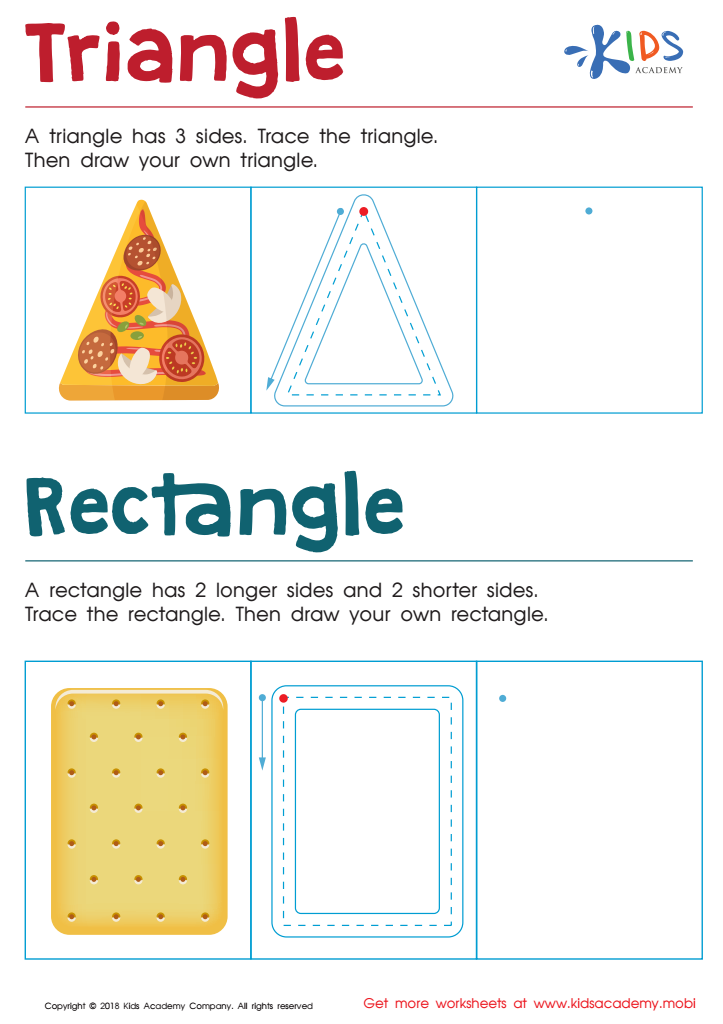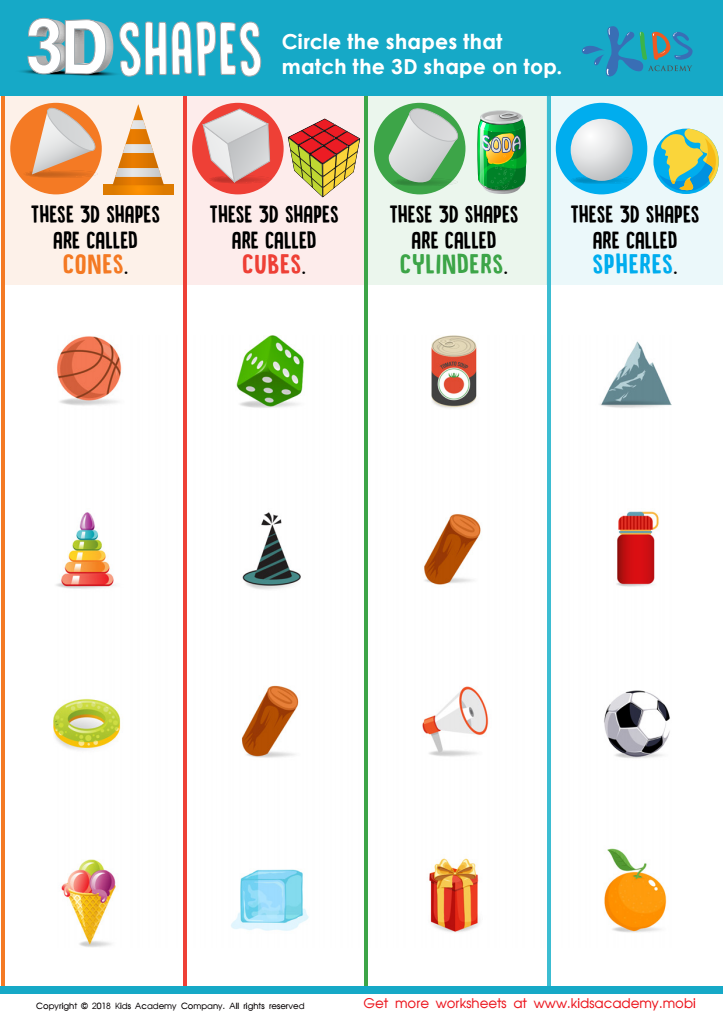Differentiating shapes Normal Worksheets for Ages 6-7
3 filtered results
-
From - To
Discover the joy of learning with our "Differentiating Shapes Normal Worksheets" designed for ages 6-7. These fun, engaging printable worksheets help young learners master the essential skill of recognizing and differentiating between various shapes. Through a series of interactive activities, children will develop critical thinking and spatial awareness. Perfect for both classroom and home use, our worksheets encourage independent learning while providing meaningful practice. Elevate your child's learning experience and build a solid foundation in geometry with Kids Academy's expertly crafted resources. Download now to watch your child's confidence and skills grow with every shape they identify!


Triangle Rectangle Worksheet


Plane Geometry: Sides Worksheet


3D Shapes Worksheet
Differentiating shapes is a crucial skill for young learners and should be a priority for parents and teachers of children aged 6-7. At this developmental stage, spatial awareness and cognitive skills are rapidly advancing. Recognizing and distinguishing various shapes lays the foundation for geometry, a core component of the math curriculum in later school years. Shape differentiation also enhances more than just mathematical skills; it fosters problem-solving abilities and logical thinking.
Moreover, when children learn to identify shapes, they're simultaneously improving their observation skills, helping them notice details about objects in their everyday environment. This observational skill extends beyond the classroom, aiding in visual literacy important for reading and writing development.
Additionally, understanding shapes is linked with enhancing young children's fine motor skills. Activities such as tracing, drawing, and cutting shapes help improve hand-eye coordination and dexterity, further aiding in their overall academic development.
Socially, shape differentiation lessons often involve group activities, which help young learners develop their ability to cooperate and communicate with peers. All these aspects combined make the ability to differentiate shapes an essential building block that supports comprehensive educational growth for young students. Hence, parents and teachers should give this skill the attention it deserves.
 Assign to My Students
Assign to My Students
















